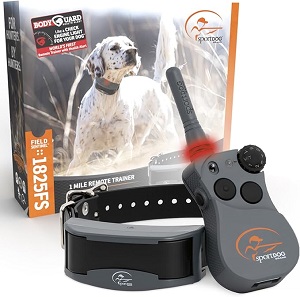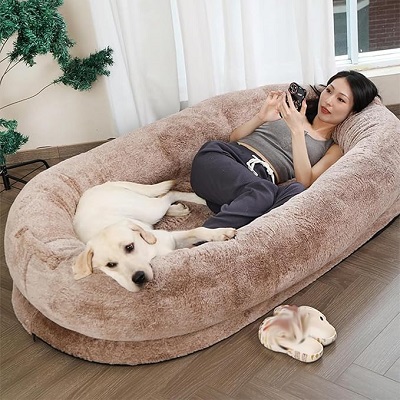
The Ultimate Checklist for First-Time Dog Owners
The Ultimate Checklist for First-Time Dog Owners: A Guide to Essentials
Introduction
Bringing home a new dog is an exciting and heartwarming experience. However, it also comes with great responsibility. As a first-time dog owner, you need to be well-prepared to ensure your new furry friend is happy, healthy, and safe in their new home. From the essentials like food and toys to preparing your home and understanding your dog’s needs, this ultimate checklist will guide you through everything you need to get started on the right paw.
1. Basic Supplies for Your New Dog
Before bringing your new dog home, make sure you have all the essential supplies to keep them comfortable and well-cared for.
Food and Water Bowls
Choose sturdy, non-slip bowls that are the right size for your dog. Stainless steel or ceramic bowls are easy to clean and more durable than plastic ones.
High-Quality Dog Food
Select a high-quality dog food that’s appropriate for your dog’s age, size, and breed. If you’re unsure which food is best, consult your vet for recommendations. Don’t forget to grab some healthy treats for training and rewarding good behavior.
Essentials for Your Newly Adopted Pet
Welcoming a shelter pet into your life is a beautiful journey. Here are some handpicked items to help your new friend feel safe, loved, and right at home:
Collar and Leash
A comfortable, adjustable collar is essential. Attach an ID tag with your dog’s name and your contact information. Invest in a durable leash for walks—4 to 6 feet long is ideal for control and safety during walks.
Dog Bed
Your new dog will need a cozy space to rest. Choose a dog bed that is the right size for your pet and provides adequate support, especially for older dogs or puppies. Ensure the bed is washable for easy cleaning.
Crate
Crate training is an effective way to provide a safe space for your dog and can be used during travel. Select a crate that’s large enough for your dog to stand, turn around, and lie down comfortably. Crates can also help with house training.
Toys
Toys are essential for mental stimulation and preventing boredom. Stock up on a variety of toys, including chew toys, balls, and puzzle toys. Interactive toys can keep your dog entertained while you’re away.
2. Grooming Essentials
Proper grooming is necessary to keep your dog looking and feeling their best. Here’s what you’ll need:
Brush or Comb
Depending on your dog’s coat type, invest in a good quality brush or comb. Regular brushing prevents mats and tangles while promoting a healthy coat.
Dog Shampoo
Purchase a gentle, dog-specific shampoo for bath time. Avoid using human shampoo, as it can irritate your dog’s skin.
Nail Clippers
Trim your dog’s nails regularly to prevent overgrowth, splitting, or injury. If you’re unsure about clipping nails yourself, consult a groomer or vet.
Dog Toothbrush and Toothpaste
Dental care is crucial for your dog’s overall health. Use dog-specific toothpaste and a soft-bristle toothbrush to clean their teeth several times a week.
Ear Cleaner
Regular ear cleaning is important to prevent infections, especially for dogs with floppy ears. Use a vet-recommended ear cleaner and gently clean your dog’s ears as needed.
3. Health and Safety Items
Veterinarian Contact Information
Find a trusted vet and schedule an initial check-up within the first week of bringing your dog home. Keep your vet’s contact information handy in case of emergencies.
ID Tags and Microchip
Make sure your dog has an ID tag on their collar with your contact details. For added security, consider microchipping your dog. It provides a permanent form of identification in case they get lost.
Flea, Tick, and Heartworm Prevention
Talk to your vet about flea, tick, and heartworm prevention. These medications are essential for protecting your dog from parasites and should be administered regularly.
Pet Insurance
Pet insurance can help cover unexpected medical expenses. Research different insurance providers and choose a plan that fits your budget and your dog’s needs.
First-Aid Kit
A dog-specific first-aid kit can be a lifesaver in emergencies. It should include bandages, antiseptic wipes, tweezers, a digital thermometer, and any medications your dog may need.
4. House Training and Behavior
House Training Supplies
House training is a crucial part of welcoming a new dog into your home. Be prepared with supplies like pee pads or a designated outdoor potty area. Consistent training and patience will ensure your dog learns where to go.
Training Treats
Training your dog requires patience and rewards. Keep plenty of small, soft treats on hand to encourage good behavior during training sessions.
Training Books or Resources
Consider investing in dog training books or enrolling in a puppy training class to help you understand how to communicate with your dog effectively.
5. Preparing Your Home
Puppy-Proofing Your Space
Before bringing your new dog home, take steps to make sure your space is safe for them to explore. Remove any toxic plants, secure electrical cords, and keep cleaning supplies and medications out of reach. Use baby gates to block off areas where you don’t want your dog to go.
Create a Safe Space
Designate a safe, quiet area for your dog to retreat when they need some downtime. This could be a crate, a dog bed, or a separate room where they can relax undisturbed.
6. Daily Care and Attention
Exercise Routine
Make sure your dog gets plenty of exercise to stay healthy and happy. Regular walks, playtime, and mental stimulation are essential. Different breeds have different exercise needs, so research your dog’s specific requirements.
Feeding Schedule
Establish a regular feeding schedule for your dog. Feed them at the same times every day to create a routine, which also helps with house training and digestion.
Time and Attention
Dogs thrive on companionship and attention. Make sure you have time each day to bond with your dog through play, walks, or simply relaxing together. Dogs are social animals, and spending quality time together strengthens your relationship.
7. Socialization and Training
Early Socialization
Early socialization is key to raising a well-adjusted dog. Expose your dog to different people, other dogs, and various environments to help them become comfortable in a variety of situations. Enroll them in puppy socialization classes if possible.
Basic Training Commands
Start with basic commands like “sit,” “stay,” “come,” and “down.” Positive reinforcement techniques, such as using treats and praise, can help your dog learn quickly and make training a positive experience.
8. Traveling with Your Dog
Car Safety
If you plan on traveling with your dog, invest in a dog seat belt, harness, or travel crate to keep them safe during car rides. Never let your dog ride in the front seat, as airbags can be dangerous.
Dog-Friendly Destinations
Research dog-friendly parks, beaches, and hiking trails in your area. These can be great places for exercise and bonding with your new dog.
9. Commitment to Care
Emotional Support
Bringing a dog into your life is a long-term commitment. Dogs need love, attention, and emotional support just like humans. Make sure you’re ready for the responsibility of providing for your dog’s emotional well-being.
Consistency and Patience
Raising a dog requires consistency, patience, and effort. Be prepared for challenges like house training, teething, or separation anxiety. With the right approach and a lot of love, these hurdles can be overcome.
Conclusion
Becoming a first-time dog owner is a rewarding journey filled with joy, love, and challenges. By following this ultimate checklist, you’ll be well-prepared to provide the best care for your new dog. Remember, the key to a happy dog is a well-prepared and patient owner. Embrace the experience, and enjoy the special bond that will grow between you and your furry friend.
Affiliate Products
We may earn a small commission when you shop through our links — it helps us keep sharing love and care for every dog out there, at no extra cost to you.
Up to 75% Discount

Dog Collar with Health Monitoring
BUY NOW »
Up to 55% Discount

Luxury Faux Furhuge Napping Bed
BUY NOW »

